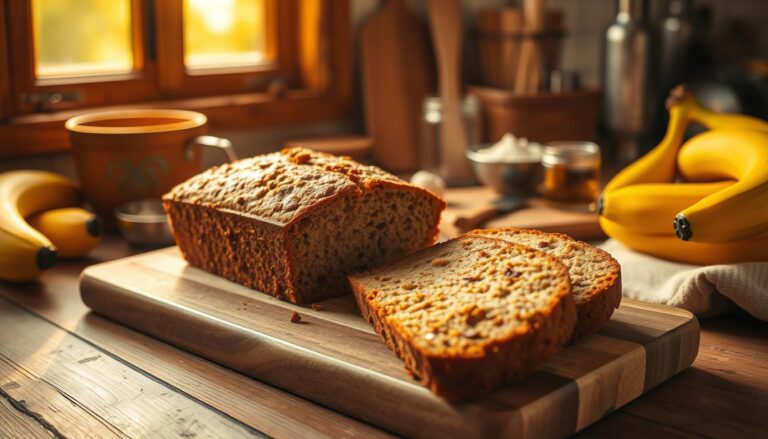Easy Cabbage and Egg Recipe
Starting your day with a dull breakfast can be tough. But, there’s a simple cabbage and egg recipe that can change that. It’s a low-carb breakfast that’s full of flavor and packed with nutrients.
This recipe is fast to make and tastes amazing. It’s perfect for anyone who wants a nutritious start to their day. Whether you’re always on the go or love cooking, this dish will be your new favorite.
Table of Contents
Understanding the Versatility of Cabbage and Egg Dishes
Cabbage and eggs are a great team in the kitchen. They turn simple meals into healthy breakfasts. This duo makes tasty vegetable omelettes and versatile dishes that can change your cooking.
Discovering cabbage and egg recipes opens up a world of tasty options. These ingredients work well together, offering great nutrition and flavor.
Benefits of Combining Cabbage and Eggs
- High protein content from eggs
- Rich dietary fiber from cabbage
- Low-calorie meal option
- Versatile cooking methods
Traditional Cooking Methods
Culinary traditions worldwide love cabbage egg dishes. Recipes like Italian frittatas and Asian stir-fries show how eggs and cabbage can be used in many ways.
Nutritional Value Overview
Adding these ingredients to your diet is good for your body. A serving gives you important vitamins, minerals, and protein. These support your health and well-being.
The simplicity of a vegetable omelette can be the key to a balanced, nutritious meal.
Essential Ingredients for the Perfect Cabbage and Egg Recipe
Making a tasty cabbage and egg recipe starts with picking the right ingredients. Your journey in the kitchen begins with fresh, top-notch parts. These turn a simple dish into a meal you’ll remember.
The beauty of egg recipes is their simplicity and flexibility. They can be many things, depending on what you add.
For a real cabbage and egg recipe, you need a few key ingredients. They work well together:
- Fresh cabbage – The main ingredient, adding crunch and nutrients
- Eggs – Full of protein and easy to use in many ways
- Onions – Bring depth to the flavor
- Olive oil or butter – Make a rich base
- Seasonings: salt, pepper, paprika
Adding some extra ingredients can make your egg recipes even better. Think about adding:
- Carrots for sweetness
- Garlic for a deeper aroma
- Fresh herbs like dill or parsley
- Tomato juice for extra moisture
- Cream or sour cream for extra richness
The secret to a great cabbage and egg recipe is finding the right balance. Your choice of ingredients can turn a simple dish into a masterpiece.
Pro tip: Always use the freshest ingredients possible for the best results.
Kitchen Equipment and Preparation Tips
Creating tasty cabbage and egg recipes needs more than just ingredients. The right tools and techniques make a big difference. Let’s look at the essential equipment and preparation methods for a perfect dish.
Before starting your cooking journey, make sure you have these important kitchen tools. They help with smooth and efficient cooking:
- Sharp chef’s knife for precise vegetable cutting
- Cutting board with non-slip surface
- Large skillet or wok
- Mandoline slicer for uniform cabbage shredding
- Mixing bowls of various sizes
- Whisk for beating eggs
Proper Cabbage Preparation Techniques
Learning how to prepare cabbage is crucial for great egg recipes. Thinly shred your cabbage for even cooking and better flavor. Start by removing the tough outer leaves, then cut the cabbage in half and remove the core. Use a sharp knife or mandoline slicer to slice the cabbage into thin, uniform strips.
Egg Handling Best Practices
When working with eggs in your cabbage recipes, follow these essential safety tips:
- Always use fresh eggs from a reliable source
- Wash hands thoroughly before and after handling eggs
- Check eggs for cracks before use
- Store eggs in the refrigerator
- Cook eggs to an internal temperature of 160°F to ensure food safety
By using the right equipment and following these preparation techniques, you’ll make delicious cabbage and egg dishes. These dishes will impress your family and friends.
Step-by-Step Cooking Instructions
Making a perfect cabbage omelette needs careful steps and attention. This guide will help you make a tasty cabbage and egg dish. It will wow your family and friends.
- Prepare the CabbageFinely chop half a head of fresh cabbage
- Transfer chopped cabbage to a large mixing bowl
- Add 1 teaspoon of sugar and a pinch of salt
- Squeeze 1 tablespoon of fresh lemon juice over the cabbage
- Let the mixture sit for 10 minutes to soften
- Egg PreparationCrack 3-4 fresh eggs into a separate bowl
- Whisk eggs until smooth and well-combined
- Season with salt and pepper to taste
- Cooking the Cabbage OmeletteHeat a non-stick skillet over medium heat
- Add a small amount of butter or oil
- Drain excess liquid from the cabbage
- Spread cabbage evenly in the pan
- Pour whisked eggs over the cabbage
- Cook for 3-4 minutes until eggs are set
Your cabbage and egg recipe is now ready to serve. Keep the heat medium and watch the eggs closely. This way, you’ll get a tender, tasty omelette. It will mix the crunch of cabbage with the softness of eggs.
Pro tip: For an extra flavor boost, sprinkle some fresh herbs like chives or parsley on top of your cabbage omelette before serving.
Flavor Variations and Seasoning Options
Start a culinary journey with your cabbage egg dish by trying new seasonings. Your vegetable omelette can become a global flavor adventure. It can make simple ingredients taste amazing.
Trying different seasonings can make your cabbage and egg recipe unique. It’s all about knowing how herbs, spices, and condiments can change the dish’s taste.
Asian-Inspired Seasonings
For an Asian twist on your vegetable omelette, try these:
- Soy sauce for umami depth
- Sesame oil for nutty undertones
- Gochujang for spicy complexity
- Rice vinegar for tangy brightness
European Flavor Combinations
European cuisines bring rich, sophisticated flavors to your cabbage egg dish:
- Herbs de Provence for a French touch
- Smoked paprika for Spanish flair
- Dill and caraway seeds for Eastern European warmth
Herb and Spice Suggestions
Enhance your dish with these versatile herbs and spices:
- Fresh parsley for brightness
- Crushed red pepper for heat
- Dried thyme for earthy notes
- Cumin for deep, warm flavor
The beauty of a cabbage egg dish is its flexibility. Feel free to mix and match seasonings to make it your own.
Serving Suggestions and Pairing Ideas

Your cabbage and egg breakfast is perfect for any meal. It’s great for a quick breakfast or a relaxed brunch. These tips will make your dish even better.
Here are some tasty pairing ideas for a full egg breakfast:
- Fresh garden salad with light vinaigrette
- Crusty artisan bread
- Roasted cherry tomatoes
- Crisp cucumber slices
- Herbed yogurt sauce
Drinks can make your meal even more special. Freshly brewed coffee or a light herbal tea go well with the cabbage and egg.
How you present your dish is important. Put your cabbage frittata on a warm ceramic plate. Add fresh herbs like parsley or chives for extra flavor and looks.
Pro tip: Warm your serving plates slightly before plating to keep your egg breakfast at the ideal temperature.
For brunch, make a stunning display. Place your cabbage and egg dish in the middle. Surround it with sides and garnishes in bright colors.
Storage Tips and Reheating Methods
Keeping your healthy breakfast tasty is easy. Just use the right storage and reheating methods. This way, you can enjoy your cabbage and egg dish for days.
Storing your dish right keeps the flavor and keeps it safe. It’s all about the right temperature and containers.
Refrigeration Guidelines
- Store in an airtight container right after it cools
- Put it in the fridge within 2 hours of cooking
- It stays good for 3-4 days in the fridge
Freezing Your Cabbage and Egg Recipe
Freezing is a great way to keep your breakfast fresh:
- Wrap each portion in plastic wrap
- Put the wrapped portions in a freezer-safe container
- Freeze for 2-3 months
Reheating Techniques
Bring back the taste of your cabbage and egg dish with these easy steps:
- Microwave: Heat on medium for 1-2 minutes
- Skillet: Warm on medium-low for even heating
- Add a bit of water to avoid dryness
“The secret to maintaining flavor is gentle, even reheating” – Culinary Experts
Follow these tips for storing and reheating. Your cabbage and egg dish will stay tasty and safe. This makes meal prep a breeze and fun.
Health Benefits and Dietary Considerations

Your cabbage and egg dish is a nutritional powerhouse. It’s perfect for those who want a low-carb breakfast. This simple yet elegant meal is packed with nutrients that support many dietary goals.
The mix of cabbage and eggs makes for a healthy breakfast. It’s rich in essential nutrients. Nutritionists love it for its versatility and balanced macronutrients.
- Supports weight management goals
- Provides high-quality protein
- Delivers critical vitamins and minerals
- Fits seamlessly into low-carb diet plans
Eggs add a lot of protein, while cabbage brings important micronutrients. Just one serving offers about 15 grams of protein and less than 5 grams of carbs. It’s great for those watching their nutritional intake.
“Nutrition is not about eating less, but eating right” – Anonymous Nutritionist
Your low-carb breakfast helps keep blood sugar stable. It supports muscle maintenance and gives you energy all morning. The dish’s nutrient density makes it perfect for ketogenic, paleo, or balanced diets.
Cabbage also adds health benefits like antioxidants and anti-inflammatory compounds. This healthy breakfast option shows that nutritious meals can be tasty and easy to make.
Troubleshooting Common Cooking Issues
Preparing tasty cabbage and egg recipes can sometimes be tricky. Knowing how to fix common cooking problems will help you make perfect dishes every time.
Cooking mishaps can happen to anyone. But knowing how to fix them makes a big difference in your cooking journey.
Texture Problems and Solutions
Getting the right texture in your cabbage and egg dishes is key. Here are some common texture issues and how to solve them:
- Soggy Cabbage: Make sure to drain well and pat dry before cooking
- Rubbery Eggs: Cook on low heat and take off heat when slightly jiggly
- Uneven Cooking: Chop ingredients the same size for even texture
Temperature Control Tips
Getting the temperature just right is important for perfect egg and cabbage recipes. Here’s what to do:
| Cooking Stage | Recommended Temperature | Key Tip |
|---|---|---|
| Sautéing Cabbage | Medium Heat | Prevent burning while maintaining crispness |
| Cooking Eggs | Low-Medium Heat | Avoid overcooking and maintain creamy texture |
Seasoning Adjustments
Getting the flavors right in cabbage and egg recipes takes careful seasoning. Start with a little and taste as you go. Salt and pepper are basics, but feel free to try herbs and spices too.
Pro tip: The frittata is perfectly cooked when the edges are set and the center remains slightly jiggly.
With these tips, you’ll be ready to tackle any cooking challenges. You’ll make delicious meals every time.
Conclusion
Your cabbage and egg recipe adventure doesn’t end here. This versatile vegetarian breakfast has opened a world of culinary possibilities right in your kitchen. By mastering this simple yet delicious dish, you’ve learned how everyday ingredients can transform into a nutritious and satisfying meal.
Experimenting with different seasonings and cooking techniques will help you personalize this cabbage and egg recipe to suit your taste preferences. Whether you’re looking for a quick breakfast or a light dinner option, this recipe provides flexibility and endless creativity. Your newfound skills will inspire more home cooking adventures.
Remember that cooking is about enjoying the process and making meals that bring joy to your table. Start with the basic recipe, and don’t be afraid to explore variations. Your culinary confidence will grow with each attempt, making this vegetarian breakfast a staple in your recipe collection.
We invite you to share your unique twists on this cabbage and egg recipe. Your kitchen experiences and creative adaptations can inspire other home cooks looking to expand their culinary repertoire. Keep exploring, keep cooking, and most importantly, keep enjoying delicious, homemade meals.
FAQ
Is a cabbage and egg recipe suitable for different dietary needs?
Yes, this recipe fits many diets. It’s low-carb, gluten-free, and works for vegetarians or keto diets. Eggs and cabbage make a protein-rich meal for various eating plans.
How long does it take to prepare a cabbage and egg dish?
It takes 15-20 minutes to make. Chopping cabbage and cracking eggs takes 5-10 minutes. Cooking takes 8-12 minutes, depending on your method.
Can I make this recipe ahead of time?
You can prep parts ahead. Store shredded cabbage for 3-4 days. The dish can be refrigerated for 1-2 days. Reheat on low heat to keep eggs soft.
What are the best ways to add extra flavor to a cabbage and egg dish?
Use garlic powder, smoked paprika, or fresh herbs for flavor. Caramelized onions, cheese, or bacon bits add depth.
Is this recipe budget-friendly?
Yes! Cabbage and eggs are cheap. This recipe is a nutritious, affordable meal. You can make it for under $3 per serving.
How can I ensure my eggs are cooked perfectly?
Cook on medium-low heat and stir often. For scrambled eggs, stir constantly. For omelettes, flip when edges set. Use butter or oil to prevent sticking.
Are there any common mistakes to avoid when making this recipe?
Avoid overcooking eggs and using high heat. Make sure cabbage is thinly sliced and season well. This ensures a tasty dish.
Can I use different types of cabbage?
Yes! Try green, red, Napa, or savoy cabbage. Each type has its own flavor and texture, letting you experiment.
Is this recipe good for meal prep?
It’s great for meal prep. Chop cabbage and cook it ahead. Store eggs separately. Then, quickly assemble when you’re ready to eat.
What are some protein alternatives if I don’t want to use eggs?
Use tofu, tempeh, plant-based egg substitutes, or lean meats like chicken or turkey. Each will change the dish’s taste and nutrition.







